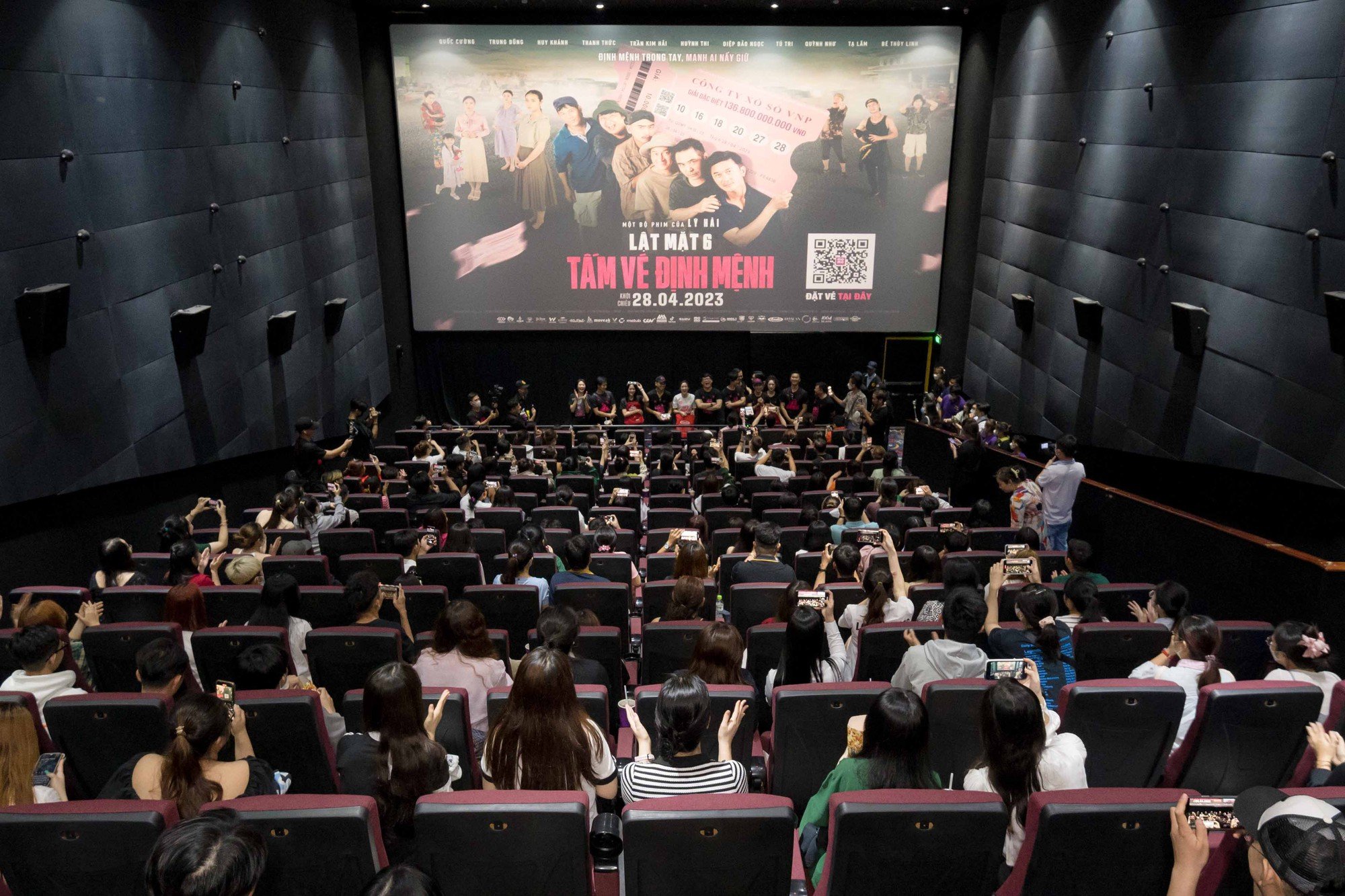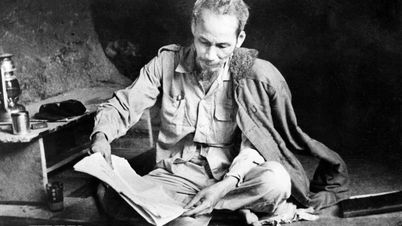Currently, Decree 131/2022/ND-CP (effective from January 1, 2023) detailing a number of articles of the Cinema Law has provisions on the ratio of Vietnamese film screenings in the national cinema system. Accordingly, Article 9 clearly states: "The ratio of Vietnamese film screenings in the cinema system is implemented according to the following roadmap: Phase 1: From January 1, 2023 to December 31, 2025, it must ensure at least 15% of the total number of screenings in the year; Phase 2: From January 1, 2026 onwards, it must ensure at least 20% of the total number of screenings in the year". In particular, Vietnamese films shown in theaters must be given priority to be shown between 6:00 p.m. and 10:00 p.m., which is the golden hour.
The rate of "protected" screenings does not satisfy theater owners or filmmakers.
In reality, when there is a Vietnamese film that attracts audiences, the theater will arrange many screenings, even foreign blockbusters have fewer screenings (and vice versa). For example, with Lat mat 6: The ve dinh menh by director Ly Hai, shown on the occasion of the April 30 - May 1 holiday, the film was favored by theaters nationwide with more than 4,600 screenings per day, lasting nearly 10 days. The film Con Nhót mot chong by director Vu Ngoc Dang with the acting of Thu Trang - Thai Hoa was shown at the same time as the holiday, and was also arranged to have 3,600 screenings (but currently this film is being cut to only 900 screenings, although it still has an audience, with a revenue of 65 billion VND). Meanwhile, other hot foreign films such as Ghost Train Station, Ghost Love, Super Naughty Cat in the Museum, Dungeons and Dragons: The Thief's Honor... are only scheduled to have 200 - 300 screenings per day, and some other foreign films have even fewer screenings. When Guardians of the Galaxy 3 was released on May 5, theaters only reserved more than 1,700 screenings for this Hollywood Marvel blockbuster, and slightly reduced the screenings for Vietnamese films, but they are still very high, such as Lat mat 6: The fateful ticket, which currently has a total of about 3,200 screenings per day.

The crew of the film Con Nhót mot chong interacted at the theater
With the regulation on the ratio of Vietnamese film screenings in theaters as proposed by the 2022 revised Cinema Law and Decree 131/2022/ND-CP, many opinions in the film industry and theater owners are still concerned and unsatisfied. On the theater side, Mr. Nguyen Son, representative of the Cinestar theater chain, said: "Our theaters always want to contribute to the development of the country's cinema, but business profits are also a matter of survival. The regulation on the ratio of 20% of the total screenings in a year for Vietnamese films must depend on the number of films released in theaters that year. Although we always support Vietnamese films, there are Vietnamese films that we open for screening but have no audience, so we are forced to cut the screenings to prioritize other films. Only in years when Vietnamese films are hot and attract audiences can we ensure this ratio." CGV cinema representative also said: "If Vietnamese films are too bad, how can we force them to show many shows when the theater is empty and has no audience? But when there are special films like Bo Gia, Nha Ba Nu, Hai Phuong, Lat Mat 6... then clearly there is no need to force them, we still arrange a dense screening schedule on the days, overwhelming other foreign films, raising the revenue of Vietnamese films to a record 475 billion VND like the case of Nha Ba Nu".
Meanwhile, many film producers and directors also disagree with the 15 - 20% screening rate for Vietnamese films in the theater system, and fear that this regulation will be an "excuse" for theater owners to force not-so-hot films to be shown, claiming that theaters are not breaking the law when they allow screenings at a rate of 15 - 20%; and filmmakers say that this rate is too low for films to recover their capital, let alone make a profit. Producer Nguyen Trinh Hoan, representative of HK Film Company, wants to increase this percentage higher, when analyzing: "On average, every day, all theaters have about 8,000 screenings. If we take the 15 - 20% mark, it means that Vietnamese films only have about 1,500 screenings. Currently, there are 30 - 40 Vietnamese films released each year, in the near future it could increase to 50 films, on average each film is only shown from 10 days to two weeks and if each day Vietnamese films show 2,000 screenings, the ability to recover capital seems to be impossible, it takes 3,000 - 4,000 screenings/day to cover the capital. Therefore, the figure of 15 - 20% is very low, below the required level".

A packed screening of the movie Lat mat 6
What problem helps "protect" Vietnamese films effectively?
It can be seen that the Government and the Vietnamese Cinema Law's regulation of the mandatory screening rate of Vietnamese films in the nationwide cinema system is the right direction, aiming to help Vietnamese films have a "place", not be too oppressed compared to the number of foreign films currently being shown in cinemas, and also to have a minimum level of fair competition. However, the most important issue is that Vietnamese directors and filmmakers must improve the quality of their films, because only good films will have audiences, and the government's policy of "protecting" Vietnamese films will be effective.
Currently, more than 80% of the market share of cinema complexes in Vietnam belongs to foreign companies such as CJ CGV (holding 51% of the market share with 81 cinemas with 475 cinema rooms in 30 provinces and cities), Lotte (holding about 30% of the market share with more than 42 cinemas nationwide)..., only a small market share belongs to Vietnamese companies (Mega GS, BHD, Galaxy have 2, 10 and 19 cinemas nationwide respectively) and a few small state-owned cinemas belonging to the state cinema system. Therefore, to implement the mandatory screening rate of Vietnamese films at cinemas, it probably depends on the market rules, good products, suitable for audience needs, Vietnamese films have positions, many screenings to stay in cinemas as desired.
However, producer KN commented: "When theater owners and film distributors occupy too large a market share, they have the right to control habits, preferences, tastes and which films are released in theaters in Vietnam . Without a suitable and firm approach, Vietnamese films will be disadvantaged in their own market, and it will be difficult to avoid fierce competition from imported films due to unfavorable screening schedules." In fact, many Vietnamese film production units have said that the unbalanced screening schedules between foreign and domestic films cause Vietnamese films to have few customers, be "kicked" out of theaters and have a serious decline in revenue from Vietnamese films. Therefore, the policy of "protecting" domestic films is still extremely necessary for a young film industry that is just beginning to develop like Vietnam , in addition to having a strategy to change and improve from the most basic things in investing in Vietnamese cinema.
Looking at other countries, we can see that the way they "protect" creates conditions for domestic cinema to develop, which Vietnamese cinema can learn from. Governments of many countries have had special protection policies with many incentives for cinema. China has required cinemas to comply with the policy of supporting domestic films, clearly stipulating that the amount of time for showing domestic films must not be less than 2/3 of the total time for showing films in a year, setting aside specific times of the year to only show domestic films, establishing a special budget fund to support filmmakers... The Korean government has set a quota to almost absolutely protect the development of domestic cinema, in which it stipulates that the ratio of domestic film screenings must be greater than imported films in cinemas, and at the same time closely monitoring the import of films, in addition to reducing taxes and support costs, encouraging economic groups to invest production funds for domestic films... helping Korean cinema have "miraculous leaps" worth learning.
Source link

























![[Photo] Overcoming the heat, practicing to prepare for the parade](https://vphoto.vietnam.vn/thumb/1200x675/vietnam/resource/IMAGE/2025/6/21/b93392e8da8243b8a32040d19590e048)


























![[Maritime News] Wan Hai Lines invests $150 million to buy 48,000 containers](https://vphoto.vietnam.vn/thumb/402x226/vietnam/resource/IMAGE/2025/6/20/c945a62aff624b4bb5c25e67e9bcc1cb)













































Comment (0)